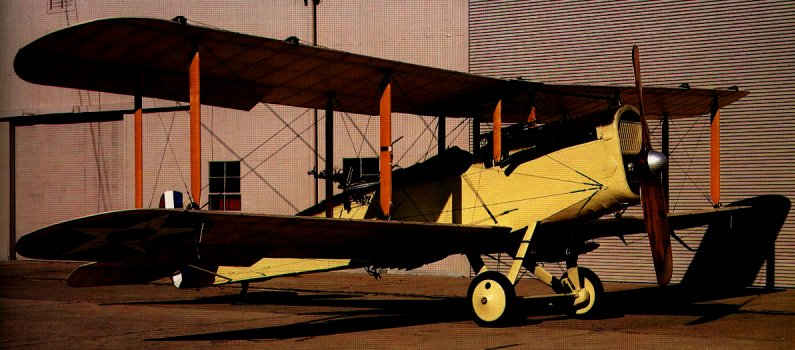The deHavilland DH-4
Today, America tries to get off the ground in WW-I. The University of Houston's College of Engineering presents this series about the machines that make our civilization run, and the people whose ingenuity created them.
"Why," wondered National Air and Space Museum Director Walter Boyne, was "the United States, which had given birth to the airplane ... so absolutely indifferent to its development [before WW-I]?" Then he goes on to tell us about the deHavilland DH-4.
By the time war began in 1914, Germany had spent 45 million dollars on military aviation, Russia 23 million, and France 13. America had spent hardly 400 thousand dollars on military aircraft. Boyne answers his own question. There was no apparent money in aviation. We'd invested everything in railways and highways.
All we had was the Curtiss Jenny. In 1915 it went to war, not against Germany, but against Pancho Villa in Mexico. Eight Jennies and ten pilots were no match for the harsh Southwest. Jennies weren't meant to go more than about fifty miles from their base. They crashed and got lost. Pershing never did catch Pancho Villa.
When we finally entered the War, we appropriated 13 million dollars for airplanes and went to the European airplane builders for designs. The British deHavilland Company had built a series of airplanes, the best of which was the Rolls-Royce-powered DH-4. The British finally sent us one to use as a template.
So we set out to build DH-4s. In the end, we spent 640 million dollars on them. We switched from the British system of hand-crafting airplanes to our automobile production methods. We developed our own so-called Liberty Engine -- a large 400 HP water-cooled V-12 machine. The American-built DH-4 was renamed the Liberty Plane. At first it had so many design bugs people called it The Flaming Coffin. When my father joined the Air Service, late in the war, he trained in Jennies. The Liberty Plane never did reach him.
But it did reach France in May, 1918. The DH-4's combat service was not distinguished. It was far too ponderous to dogfight the German Fokker triplanes and biplanes. It didn't carry enough load to be a useful bomber.
It was a clear matter of too little and too late, but there's more to the story. Thousands of DH-4's were left in America on Armistice day, and even more Liberty Engines. The DH-4 hadn't been worth much in combat, but it was a big solid stable biplane with a tubular steel frame and what turned out to be a fine engine. When you crash-landed a DH-4, you walked away alive.
Right after the war, the Army began airmail service with DH-4s. DH-4s with skis served in the Arctic. Engineers modified them every way imaginable. The Liberty Engine was so good we relied on it instead of moving ahead. It probably slowed American aircraft engine development. And so the DH-4 takes a strange place in aviation history. It couldn't stand up to the famous WW-I airplanes. Yet the forgotten DH-4 was still in service when all that remained of Fokkers and Spads were the legends that lingered after them.
I'm John Lienhard, at the University of Houston, where we're interested in the way inventive minds work.
(Theme music)
Boyne. W. J., deHavilland DH-4: From Flaming Coffin to Living Legend. Washington DC, Smithsonian Institution Press, 1994.
Wallhauser, H. T., Pioneers of Flight. Hammond Incorporated, 1969.

For a large DH-4 image click on the thumbnail
From Boyne's book: The National Air and Space Museum's deHavilland DH-4